It was less than a decade after the guns of World War II fell silent.
Toward the end of WWII, German Me-262 jet fighters had transformed the skies over Europe.
The arrival of jet-powered fighter interceptors signaled a sea change in aerial combat.
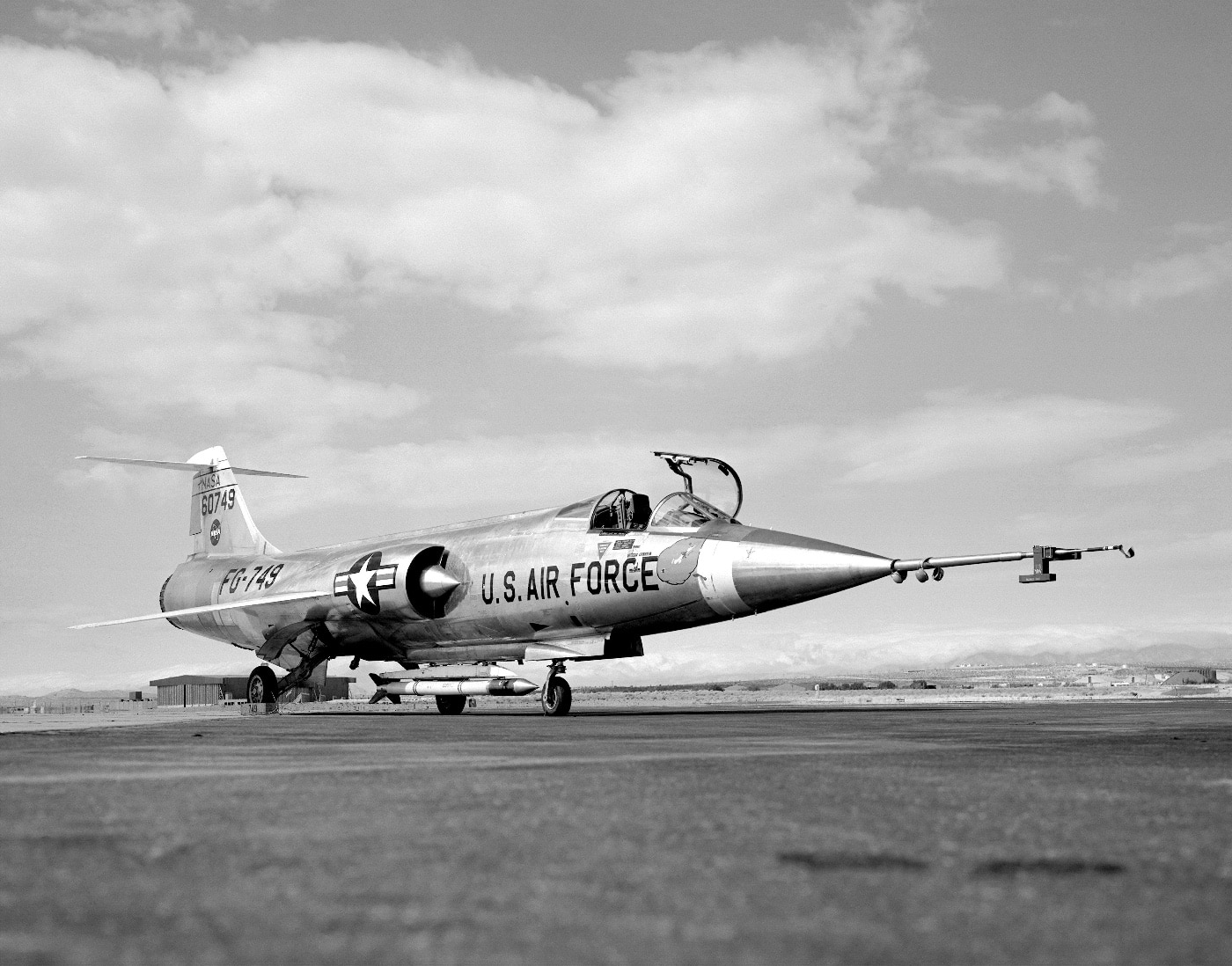
This NASA-operated F-104A is equipped with a ventrally-mounted Air Launched Sounding Rocket (ALSOR) used for scientific experiments. Image: NASA
In 1954, aviation savant Kelly Johnson debuted the F-104 Starfighter.
Lockheeds Missile with a Man in It promised to change everything about air combat yet again.
Kelly Johnson was a legitimate genius.
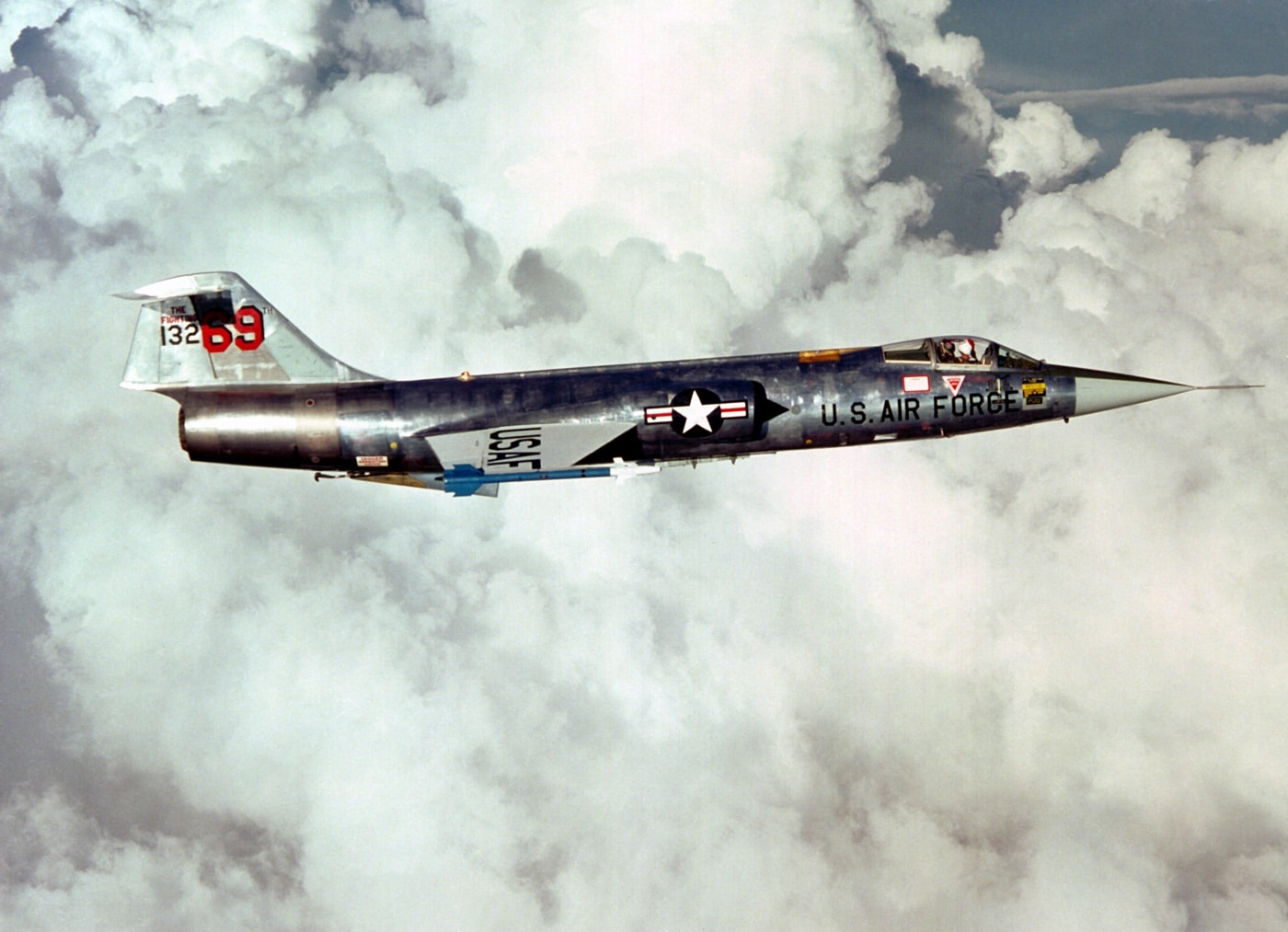
This Lockheed F-104 Starfighter aircraft carries two AIM-9J Sidewinder missiles during a flight on August 1, 1979. Image: Ken Hackman/NARA
He was also instrumental in the design of theF-117 Nighthawkstealth fighter.
Johnson worked on the Model 9D Orion in 1931, the first airliner with retractable landing gear.
Nobody else even comes close.
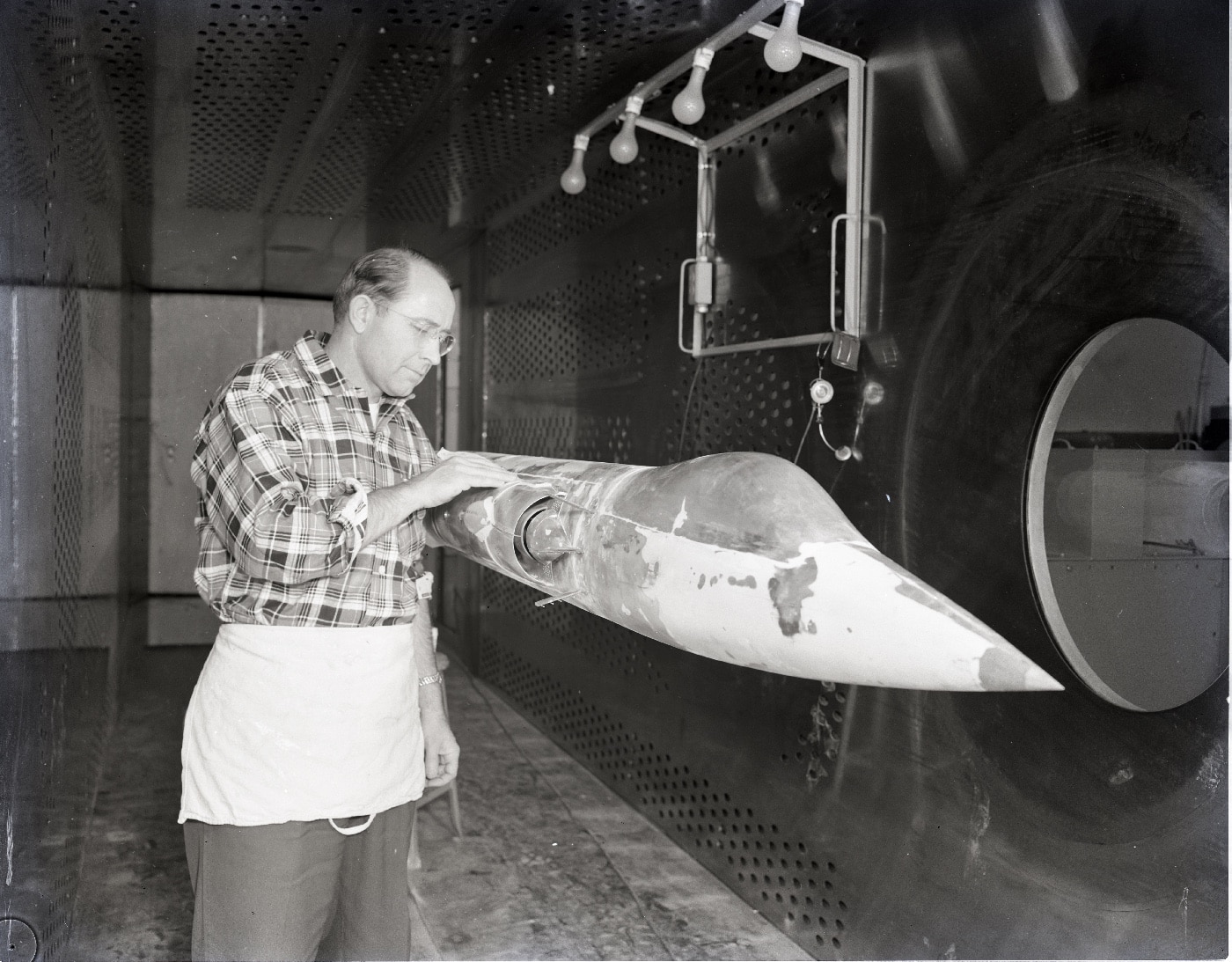
A model of the Lockheed F-104 Starfighter in a wind tunnel for testing in November, 1958. Image: Arden Wilfong/NARA
Origin Story
One of Johnsons most controversial designs was the F-104 Starfighter.
Originally contrived as a high-speed day interceptor, the plane was eventually adapted for a wide variety of missions.
It was produced by the most extensive international manufacturing consortium in aviation history at the time.
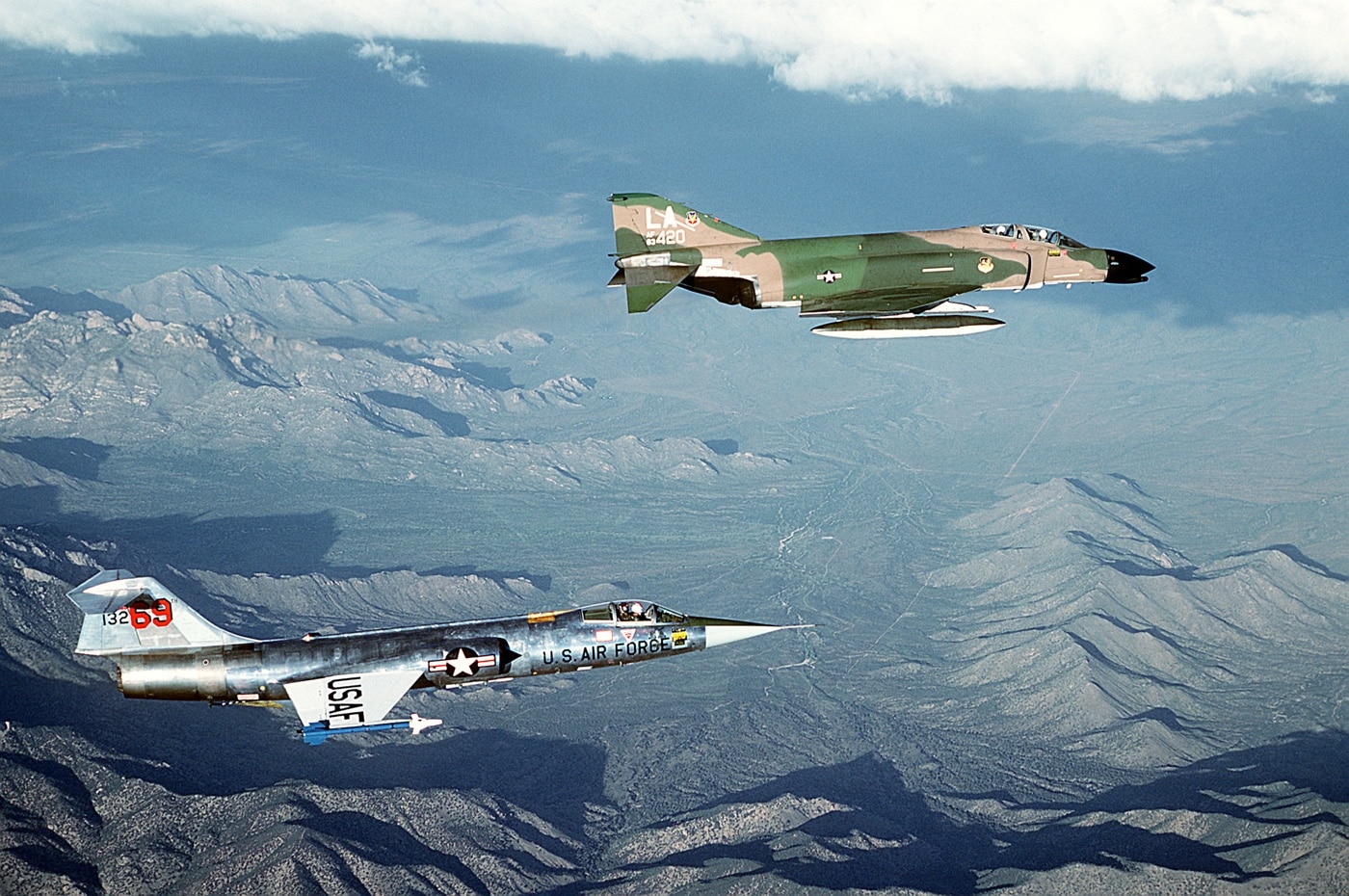
A F-104 Starfighter and F-4 Phantom in flight during a training mission near Luke Air Force Base in 1979. Image: Ken Hackman/NARA
A total of 2,578 copies saw service with 15 different air forces.
The plane was built around a single rugged GE J79 engine.
The subsequentF-4 Phantom IIutilized a pair of these powerful engines.
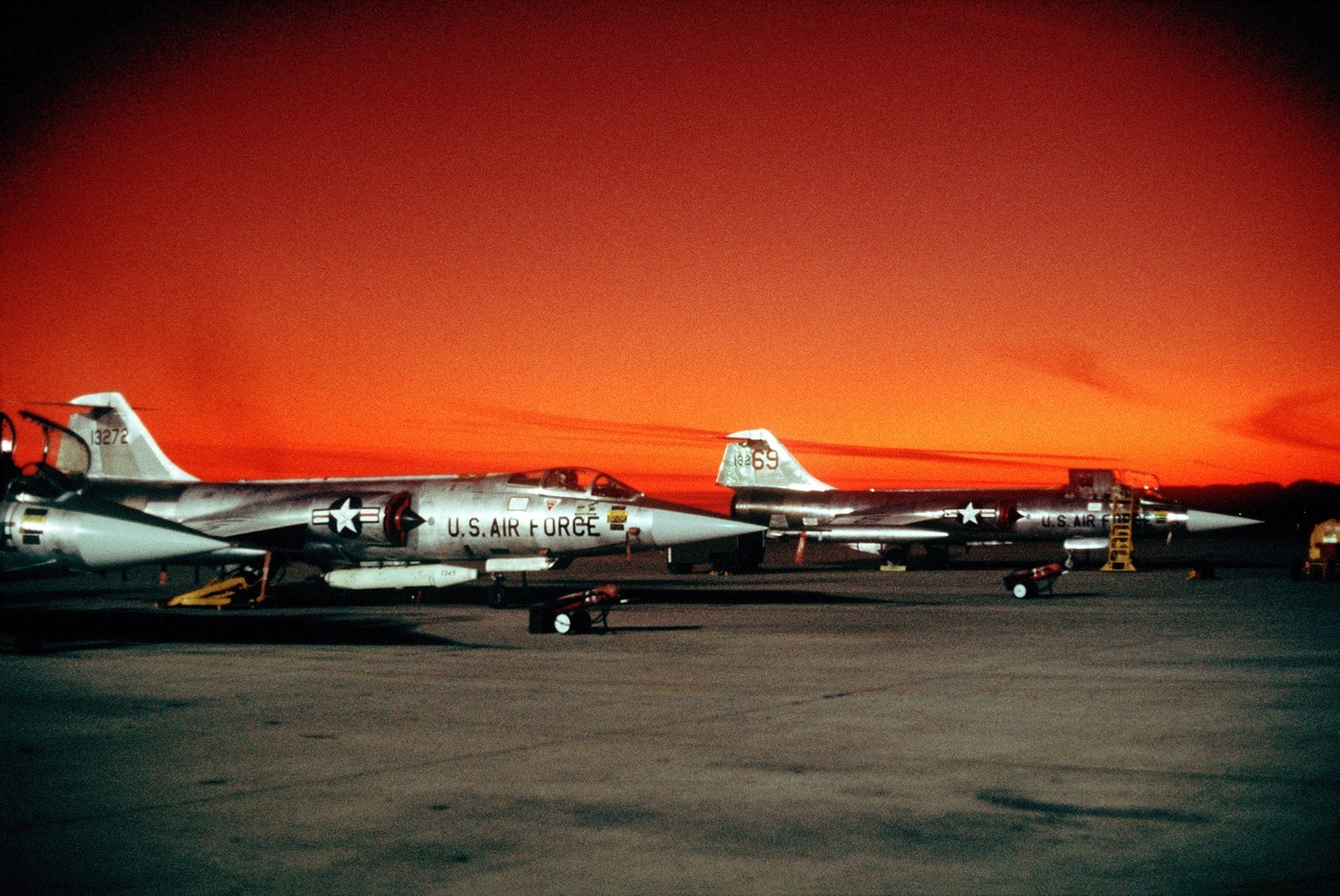
U.S. Air Force F-104G Starfighter aircraft parked on the flight line at sunset. The aircraft are being used by the 69th Tactical Fighter Training Squadron to train German pilots in 1982. Image: NARA
The F-104 was also the first fighter aircraft to employ the M61 Vulcan 20mm rotary cannon.
The M61 was used in other aircraft including theAC-119K Stinger,AC-130 Spectre gunshipand aforementioned F-4.
These fighter jocks, to a man, coveted more speed.
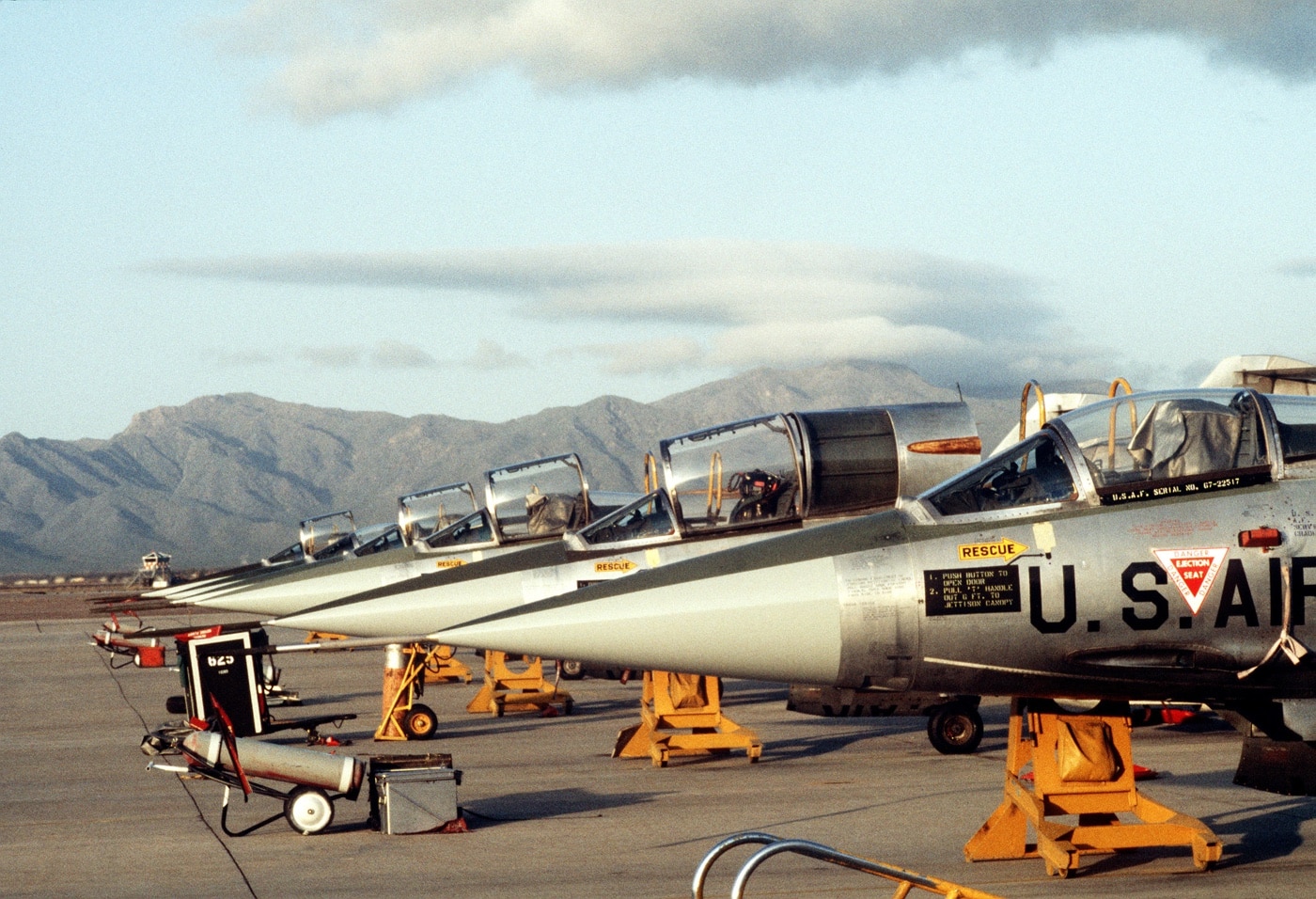
Lockheed F-104G Starfighter aircraft parked on the flight line during the training of German military pilots in 1982. Image: NARA
In the rapidly evolving world of aerial combat, speed was life.
Kelly Johnson ably answered that call.
The F-104 was really just a big honking engine with a pair of tiny little wings on the side.
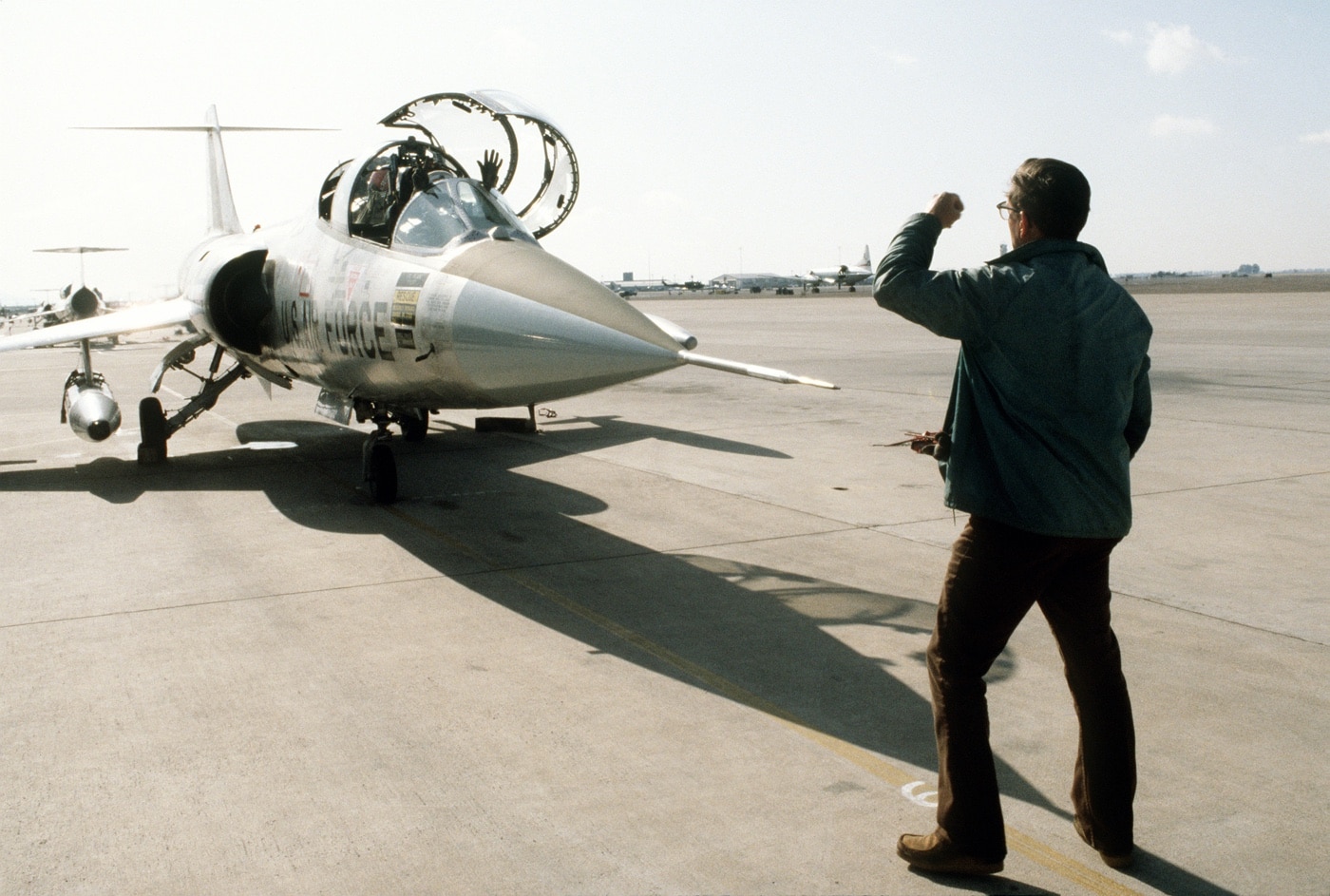
A U.S. Air Force crew chief directs an F-104G Starfighter fighter plane onto the runway during the training of German pilots by the 69th Tactical Fighter Training Squadron in 1982. Image: NARA
The hydraulic cylinders that drove the ailerons had to be less than one inch wide to fit.
I have run my fingers along the leading edge of a set of F-104 wings.
They are indeed wicked.
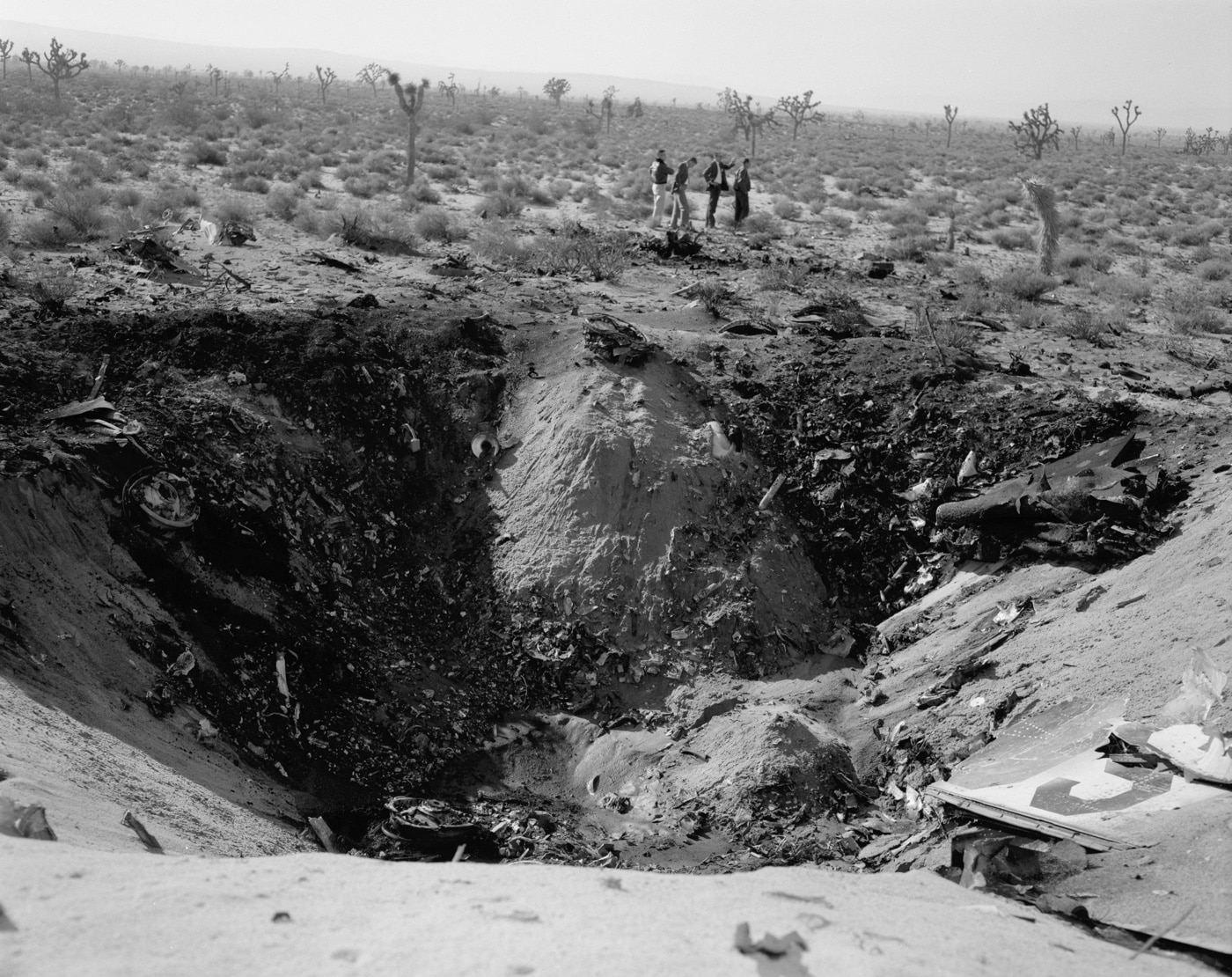
Shown is the site of the nose-first JF-104A crash that left this large crater near Edwards AFB in December 1962. NASA test pilot Milton O. Thompson safely ejected prior to impact. Image: NASA
I subsequently bought a Piper Tomahawk an old, slow, cheap airplane.
The Tomahawk is designed to be docile and forgiving.
It is the airplane that will just barely kill you.
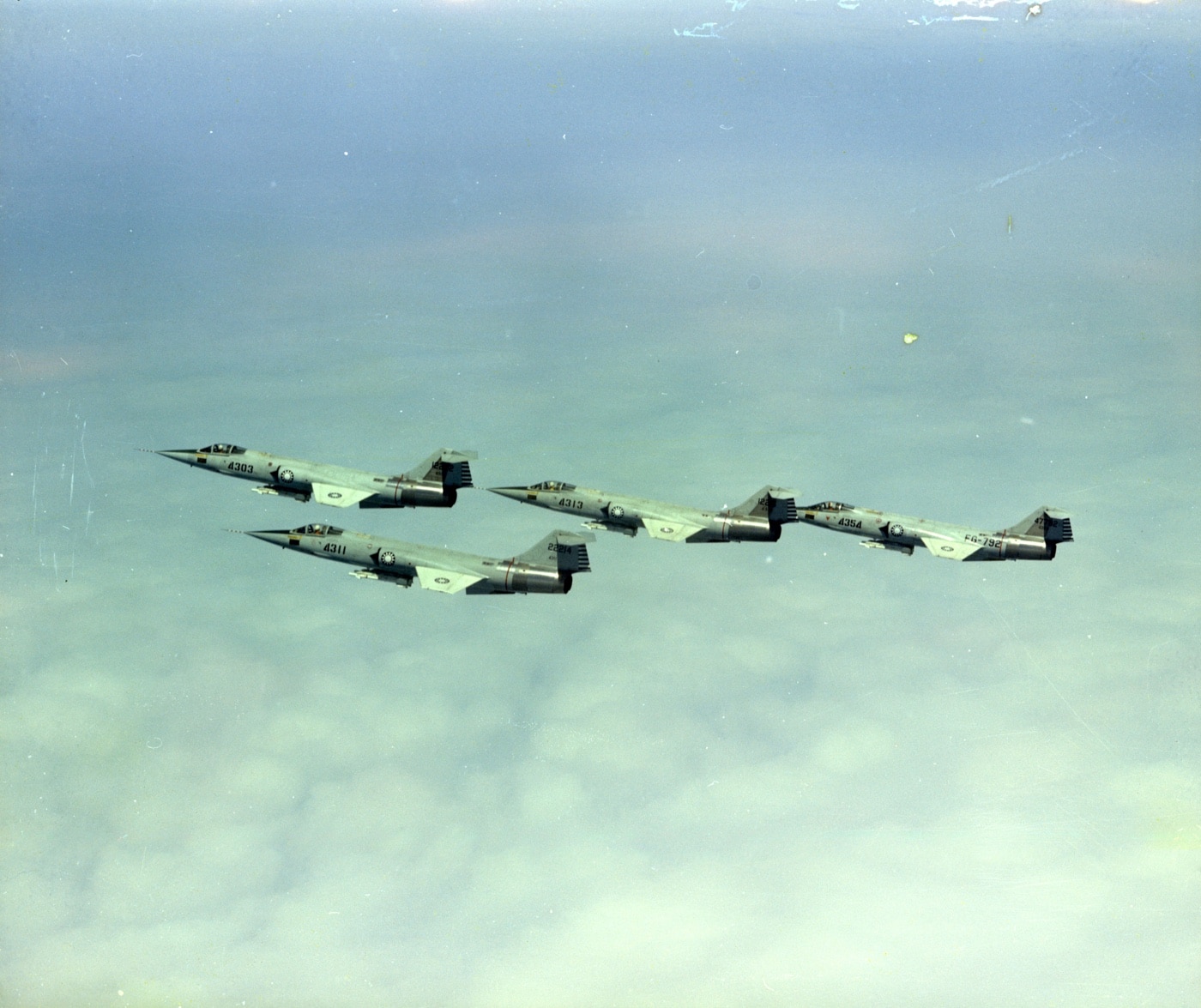
Four Republic of China Air Force (aka Taiwanese Air Force) F-104 fighters flying in close formation in 1969 near Ching Chaun Kang Air Base, Taiwan. Image: NARA
It stalls at 49 knots (or 56 mph) and cruises at around twice that.
After flying that old Tomahawk for a couple of years it was time to trade up.
My next airplane was a Vans RV-6A.
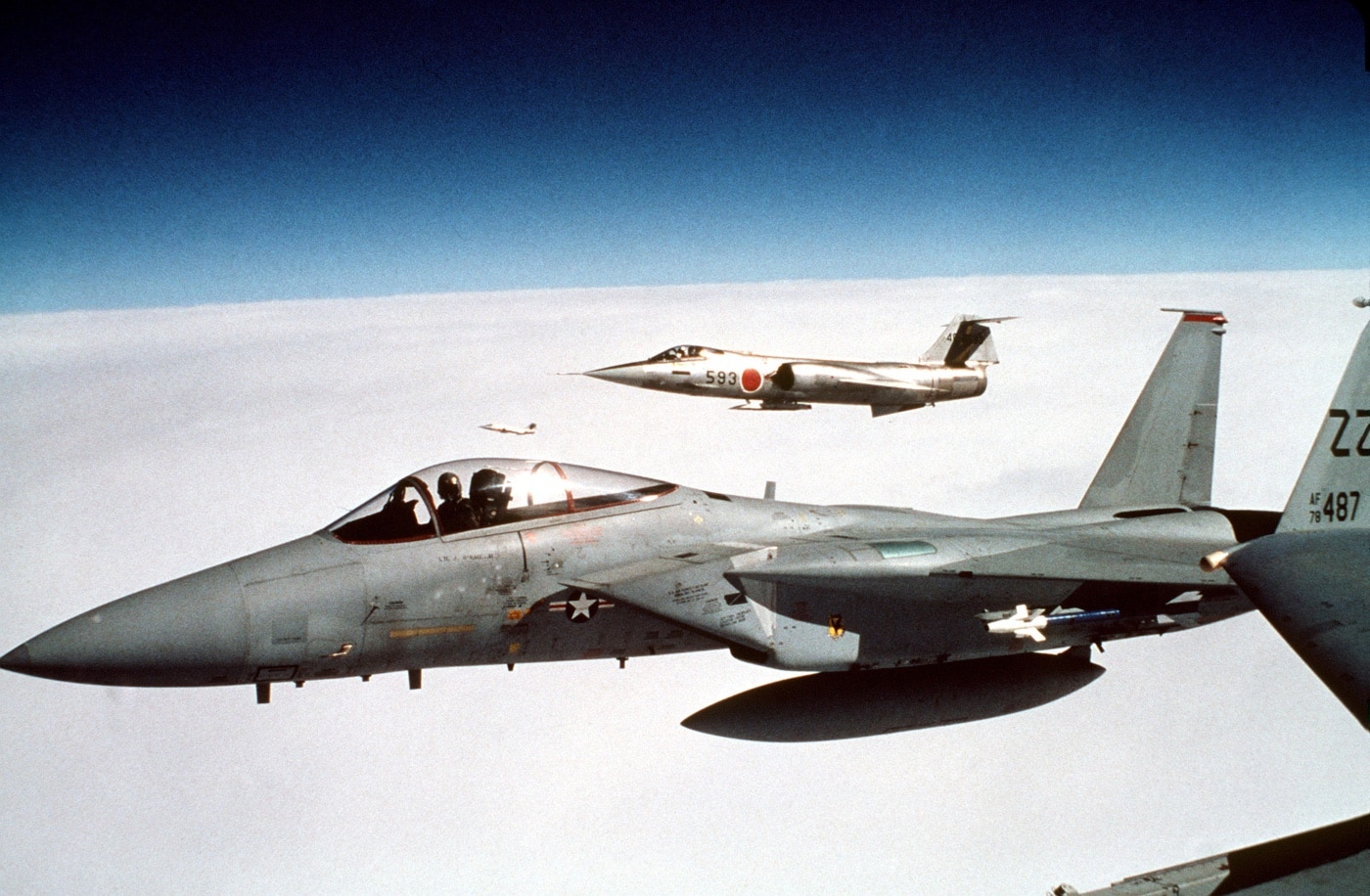
A United States Air Force F-15 Eagle flies in formation with a pair of Japanese Air Self Defense Force F-104s during exercise CAPE NORTH ’80. Image: Senior Master Sgt. Roy Bagwell/U.S.A.F.
The RV-6A is fully half again faster than the Tomahawk.
Faster airplanes are more fun.
However, they also offer less time to react.
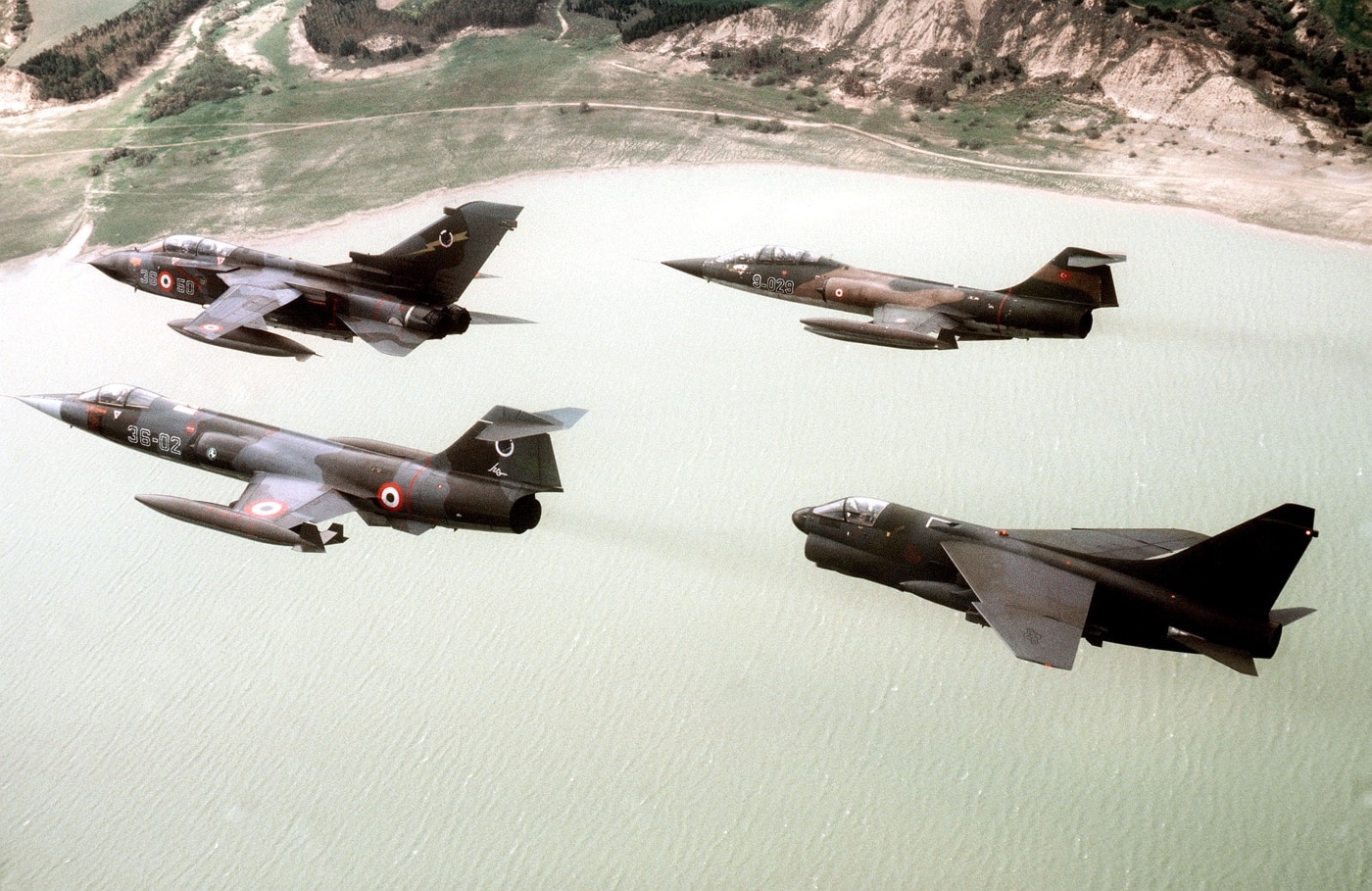
An Italian F-104 Starfighter, an Italian Tornado, a Turkish F-104 Starfighter and a U.S.A-7D Corsair IIin formation during NATO exercise Dragon Hammer ’87. Image: Staff Sgt. Fernando Serna/NARA
By contrast, the F-104 tops out at Mach 2.1, or 1,550 miles per hour.
The Starfighter stalls at 198 miles per hour and lands at 186.
You typically landed an F-104 at around 82% of available power.
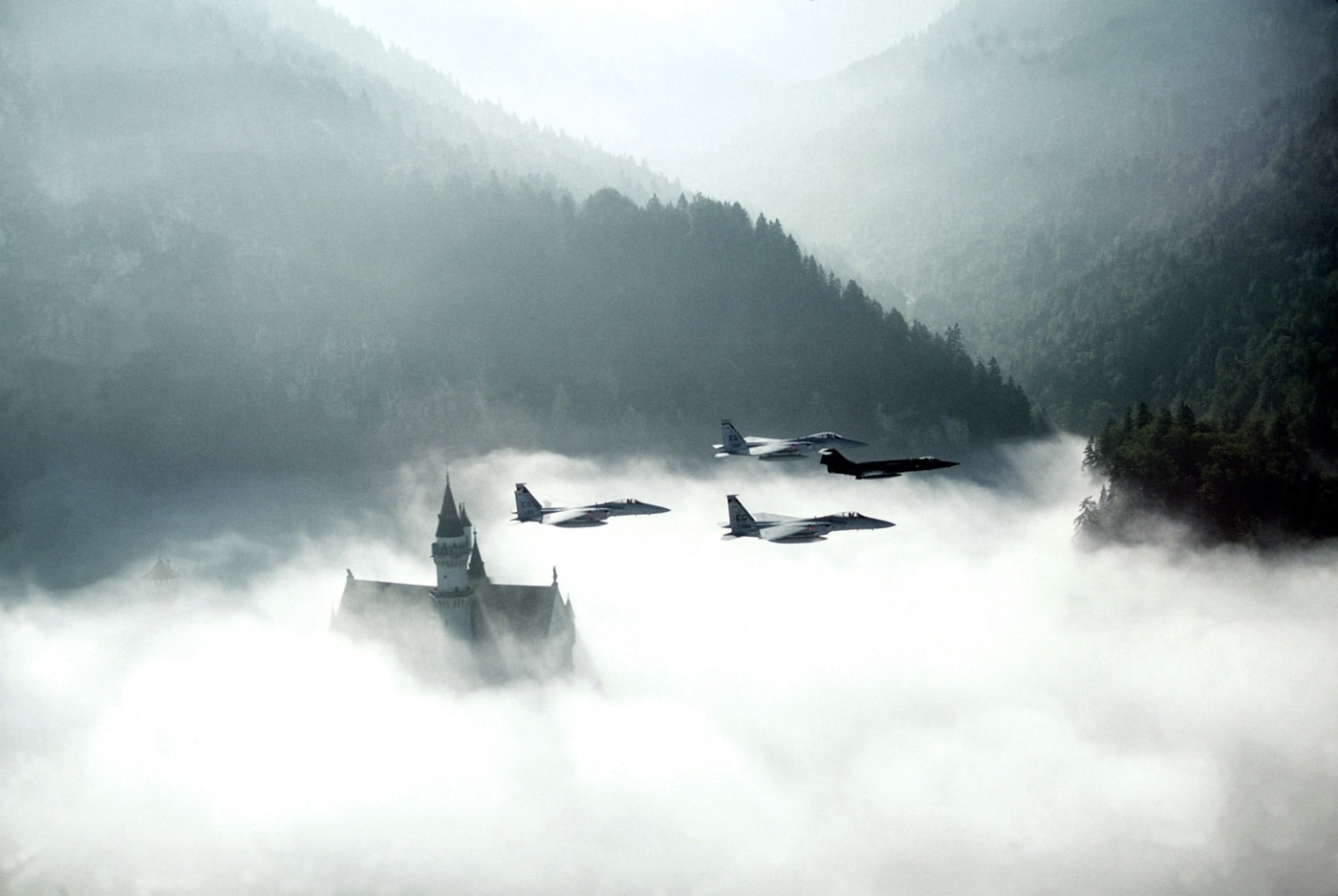
A German Air Force F-104 Starfighter leads a flight of three U.S. F-15 Eagles past Neuschwanstein Castle during REFORGER ’82. Image: Master Sgt. Richard M. Diaz/U.S.A.F.
Now, hold that thought…
Technical Details
The F-104 was undeniably capable.
That kind of performance stemmed from the planes powerful engine, trim design and unconventional tall T-tail.
The tail design was always an issue.
In fact, the first ejection system in the F-104 fired downward.
To accommodate the additional ordnance and avionics, the airframe was both lengthened and strengthened.
Once the plane fully matured, the world took notice.
There are currently 14 flyable examples in private hands in the U.S. today.
The F-104 saw fairly extensive service in Vietnam.
This was mostly as fighter escort for EC-121D Warning Star airborne radar aircraft.
The Starfighter flew some 5,206 combat sorites in Vietnam for the loss of 14 airframes.
The most prolific user of the F-104 in combat was Pakistan.
Pakistani Starfighters gave a good accounting of themselves in action against their neighbors in India.
292 of a total of 916 West German Starfighters were lost to accidents.
crashed 25.2 airplanes per 100,000 flight hours.
That is objectively horrible.
In this capacity, Hartmann commanded one of the West Germanys first jet fighter wings.
He declared the Starfighter unsafe for Luftwaffe use even before it was formally adopted.
Its tough to gauge an airplane a success when so many were lost to accidents.
Canadian pilots christened the aircraft theAluminum Death Tube.
Regardless, the F-104 was still a critical steppingstone to the immensely capable multirole combat aircraft in service today.
Fast, powerful, unforgiving, and dangerous, the Starfighter was nonetheless one undeniably cool airplane.




